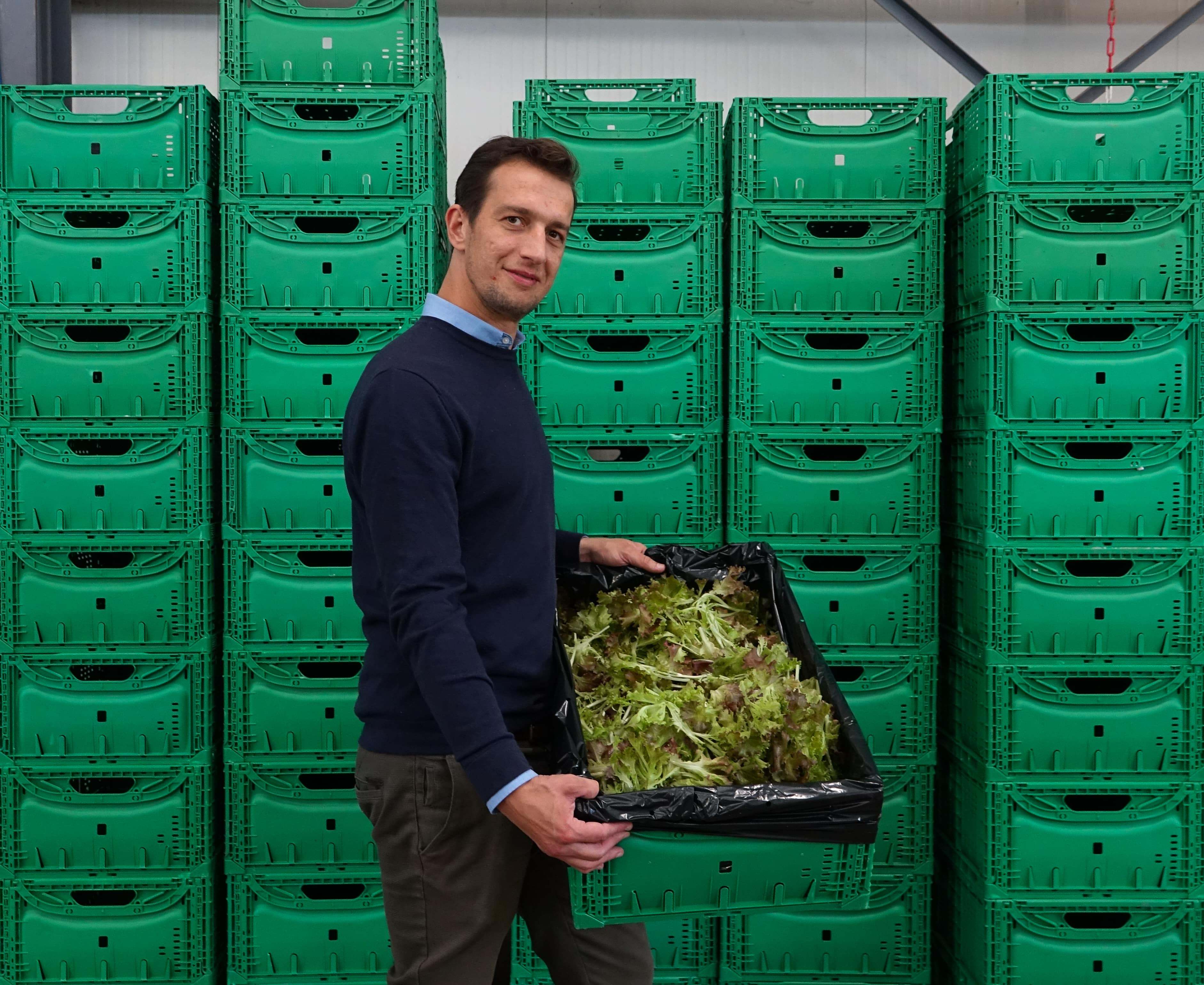
Just off the motorway in the rural outskirts of Venlo sits one of the most innovative horticultural companies in the Netherlands: SemperVere. The company grows various types of lettuce and herbs. “Year-round, pesticide-free, with significantly less water usage, CO₂-neutral, and climate-positive,” lists CEO Thomas Baars. “And all of it in a Circular Indoor Greenhouse.” Hutten has been one of the early customers and witnessed the greenhouse evolve into the perfect growth environment for crops.
Indoor farming – the cultivation of crops inside buildings – offers a potential solution to the sustainable food challenge we face as a society. In indoor environments, crops can be grown every day of the year, independent of weather or climate (change), and under fully controlled conditions. No pesticides are needed, and water and land use is drastically reduced. The biggest challenge vertical farms face is high energy consumption. Thomas Baars encountered this issue as well. “Even with a roof full of solar panels, we covered less than 5% of our energy needs. Together with my business partner, CTO Thijs Maathuis – who has extensive experience in the horticulture sector and has delivered large-scale horticulture and indoor farming projects – we started looking for a different solution. That led us to the idea of outfitting a conventional greenhouse with solar panels, combining the benefits of indoor farming with the efficiency of greenhouse cultivation.” After a successful crowdfunding campaign in April 2023 and finding a suitable ‘abandoned’ greenhouse in Venlo, renovations began in October of that year.
“We verbruiken CO2 in plaats van het te produceren!”
Climate- and energy-positive
The roof offered space for 25,000 m² of solar panels. The roof and walls were sealed and insulated. The gas-powered combined heat and power (CHP) system was removed. Thomas Baars explains: “In a traditional greenhouse with CHP, 90% of the heat (and CO₂) escapes through the ventilation windows. But our greenhouse is completely sealed; heating and cooling are powered by solar-generated electricity rather than gas. We capture CO₂ from the outside air using an innovative system and introduce it in a concentrated form. This way, we don’t emit CO₂ — we actively bring it into the greenhouse, where it’s converted back into biomass (the plants). The climate system maintains ideal temperature and humidity levels. It’s basically always spring (the meaning of ‘SemperVere’) inside the greenhouse. The solar panels have a peak capacity of 4.3 MWh — four times more than our annual usage. So in the future, we’ll even be able to feed energy back into the grid. In short: we generate more energy than we use and consume CO₂ instead of emitting it! We also use 95% less water — about 4 litres per m² per day. The only water used is what the plants absorb."
Focus on working conditions
SemperVere contributes to all the sustainability themes that Hutten also champions. Frank Dobbelsteen, Manager of Strategy & Sustainability at Hutten, says: “We believe it’s important that the organisations we work with pay attention to biodiversity & the environment, climate, circularity, and also to social aspects such as good working conditions — especially in this sector. Since SemperVere operates year-round, the greenhouse stays open, ensuring continuity for employees.” Thomas Baars adds: “For now, we work with a fixed pool of temporary workers, but we’ll soon start hiring people from that pool. We want to build a direct team and offer our people job security. Our year-round operation and steady workload mean no seasonal peaks, providing stability and continuity for our staff.”
Longer shelf life
Hutten has successfully completed a pilot at three locations and is expanding its purchasing to another three. Frank Dobbelsteen: “Together, we’re increasing the volume of various lettuce types. We’re very pleased with the product quality. Because they are grown pesticide-free, they don’t need to be washed, which extends their freshness — well over a week. SemperVere delivers the products to our fresh produce supplier Heerkens in crates with just an inner liner, reducing plastic packaging by two-thirds. Heerkens then distributes the right products to our locations.”

Zero waste
During an impressive tour of the greenhouse, we learn about the three stages of cultivation, and Thomas Baars shares the expansion plans already in motion. “We’re currently only using 30% of the greenhouse. We first wanted to get the system running properly. Now we’re building a germination room — no light is needed for that, so we can use an unused section of the greenhouse. After that, we’ll work on the rest.” As we stop by the chives, a new idea emerges. Some stems are too short for consumer packaging, creating small residual flows. Hutten will now explore whether De Verspillingsfabriek can process these into the fresh cream cheese they produce.
In the ‘Sustainable Achievers’ series, Hutten visits and speaks with its suppliers to highlight shared sustainability values. Read the other stories on our website.
